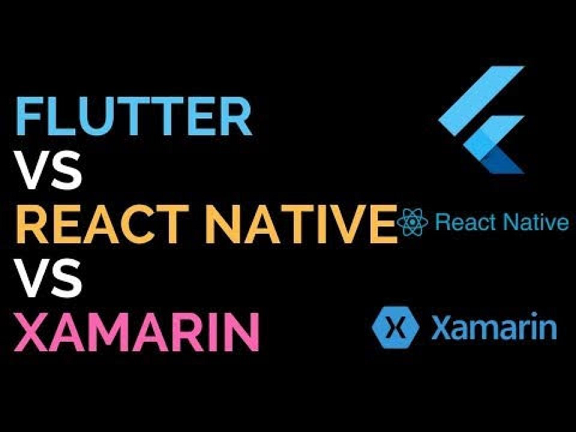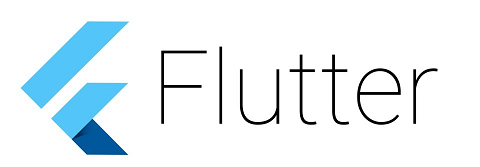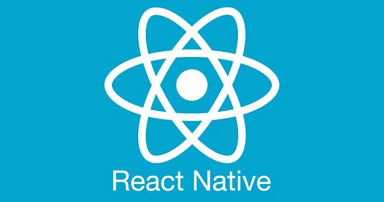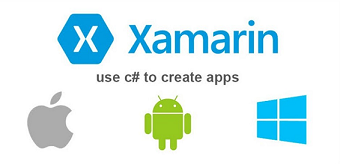

Advances in the mobile app development industry are happening fast, almost at an unnoticeable rate. One of the most recent advancements, cross-platform development, is changing the entire approach on how apps are developed to fit different software environments.
It has become a common rule for enterprises to consider CP frameworks when planning new apps or restoring to older ones. Businesses are more motivated by what this adoption has to offer from cost-effective expenses to reusable code to easy maintainability, etc. But these are just the tip of the iceberg.
There exists plenty of cross-platform frameworks out there that can facilitate the production of big-time mobile apps. Each of these technologies has specs and features that make them more preferred for use than the others. In fact, the industry is laying out a trend for enterprises to select the most influential frameworks for the development of their applications. Today, we compare three of the best CP app development tools based on their capabilities and shortcomings. Even though they come first on most developer’s lists, Flutter, React Native, and Xamarin has their own advantages and disadvantages and vary in the way that they deliver on mobile app performance.
Flutter

Nothing allows for easy and continuous mobile app development like Google’s own Flutter. Developed just recently, Flutter is a free platform that runs on the object-oriented programming language Dart. A quick and adjustable rendering motor works with the tool’s architecture to provide the very gadgets that fuel its functionality. Some mobile applications that have been developed with Flutter include- Alibaba, Google AdWords, Hamilton Musical and BetaBubs, etc…
Benefits
App performance- Thanks to Dart, the application doesn’t need a JavaScript bridge to connect with the native platform as is the case with React Native. For this reason, developers need not worry about affecting the startup time and performance of a complex application.
Explore the framework’s UI library through an open-source graphics (2D) library known as Skia.
Device compatibility- As far as the framework’s native widgets are concerned, applications can run on devices with OS versions between the Android Jelly Bean and iOS.
Flutter Packages– A lot of packages have been developed for use with Flutter following its recent plunge into the mobile app development market. You can expect to come across packages like HTTP requests, push notifications, Web Socket connections, image-handling tools, etc…
Unique widgets- With the Material Design and Cupertino widgets for both Android and IOS, the framework needn’t rely on UI components for specific platforms.
Hot reload- The ‘hot reload’ feature makes it possible for developers to change something in an application without restarting it.
Shortcomings
As promising as this new cross-platform framework is, there is no way of knowing for sure what will be become of the tool in the future. Flutter-developed apps have just but the promise of an immature app.
Contrary to most native applications that consume a space of 1 MB, applications developed with Flutter weigh in at around 4.6 MB. This is relatively large. Next to being a new framework, its size may just be the second reason why third-party services such as Android and Apple TV and tax automation software won’t support it immediately.
React Native

Facebook presented this app development technology in 2015, three years before Flutter came to being. React Native does not differ so much in qualities from its counterpart platform. Both contain widgets unique to their interfaces and are able to integrate external code into their systems. You would know these code as APIs and Extensions in RN language. Flutter identifies them as plugins and packages.
Dart’s similarity to JavaScript isn’t that far off so applications developed by RN and Flutter are barely distinctive in performance. Some mobile apps that have been developed with React Native include- Instagram, Skype, Uber, Facebook, Tesla, etc…
Benefits
Native UI components- The RN framework makes use of a collection of native UI components that give its applications the look of native apps.
Flexible development- This is made possible by modular architecture, a feature that facilitates the separation of code into a couple of independent blocks. With this, the end product is easily updated and upgraded.
Declarative programming makes it easier to maintain the end product. This results from the simple code used in programming the app.
Third party support- Developers have experienced the good that comes with development with React Native and so APIs and Plugins have been created for payment systems, maps, and others.
Ready-to-apply solutions- The fact that RN has been around for a while now has given developers time to design libraries and tools specific to the development needs of this framework. The result is a fast built app.
Hot reloading makes any changes made to the code visible to the developer.
Shortcomings
Despite React Native’s best efforts to make mobile applications as native-like as possible, the difficulty in navigating the framework’s design remains to be felt. You could compare this situation with the setting of a wolf that is forced to live a domestic life as a pet.
This doesn’t make it a dog and eventually, the wolf is set to go wild again. Also, superior apps built with RN have at times been reported to be running slower than native Android and IOS apps.
Xamarin

Microsoft launched and later acquired Xamarin in 2011. Contrary to Flutter and React Native, the framework’s development appears to have targeted a specific group of coders, .Net enterprise developers to be precise. This explains its paid nature and resistance to external code.
Some mobile apps developed using Xamarin are- The World Bank, APX, Skulls of the Shogun, etc…
Benefits
Sharing and reusing of code across multiple platforms (IOS, Android, etc.)
Xamarin plugins and NuGet enable for faster development of mobile applications.
The use of an extensive programming language, C#, allows Xamarin apps to pass for native ones. Even those developed in Swift, Java, Objective C, or Kotlin.
Model-View-Controller (MVC) and Model-View-ViewModel (MVVM)- MVC aids in the separation of presentation and application logic, while MVVM allows for the creation of different processes using the same codebase. Both cases accelerate the development procedure.
Xamarin applications are fitted with data and cloud synchronization features that make it possible to operate a mobile app offline.
In the 7 years that it has existed, Xamarin has worked with numerous popular brands and has a shiny collection of customer reviews to show for it.
Shortcomings
Even with the long existence in cross-platform app development, the framework has not figured out a way around a faster user-interphase and a more native-friendly architecture.
Its paid service limits the number of developers by ruling out budget constraint enterprises and startups. This might just be one of the reasons for Xamarin’s low customer rate as compared to the high community activity for React Native and Flutter.
The three CP frameworks have repeatedly been used in the successful development of mobile applications. However, one developer/enterprise may prefer to code with Flutter, another is best suited working with Xamarin. It all comes down to the preference for app speed, developer productivity, architecture, and ease of learning.
This article clearly outlines the pros and cons of picking Flutter, React Native, or Xamarin as your preferred app development tool. As for which of the three makes the best framework, that is a conclusion that you yourself will have to arrive at, judging through what’s best for your business

Mar 11, 2024

Mar 6, 2024

Jan 4, 2024

© 2017 All rights reserved.